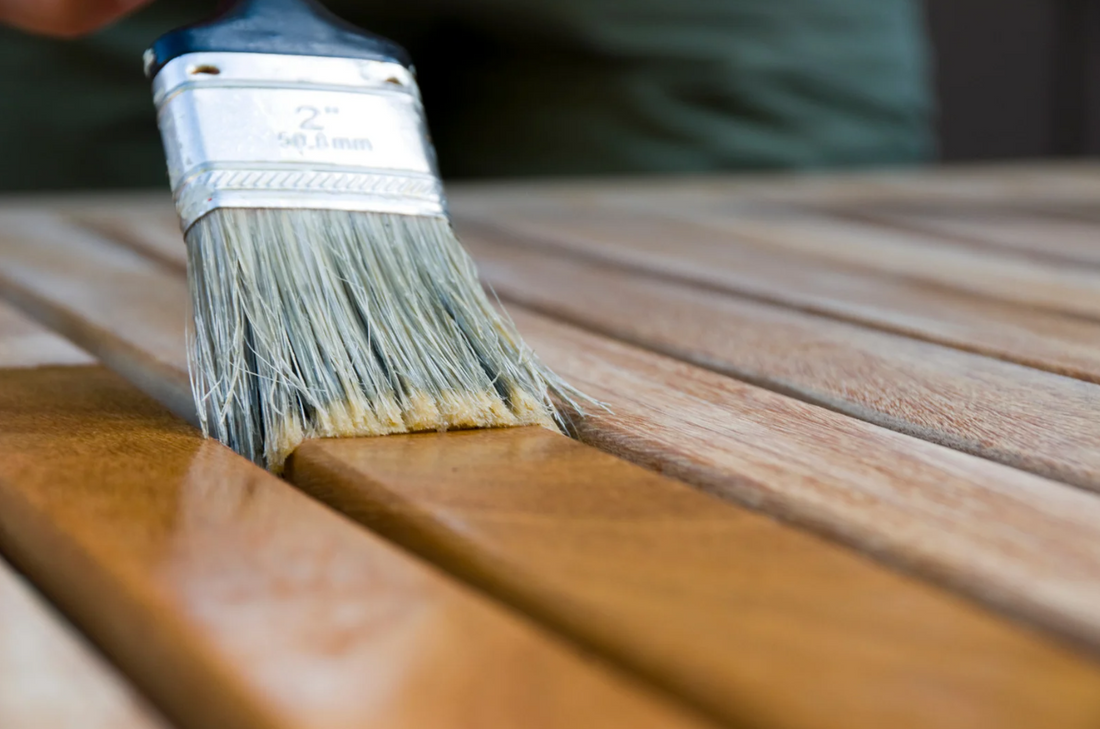
The Do’s and Don’ts of Wood Staining
Staining wood can dramatically enhance its beauty, bringing out its natural grain while adding rich color and long-lasting protection. Whether you're working on a deck, fence, or staining wood furniture, the key to a great finish lies in careful preparation and proper technique.
To help you achieve the best results, here are some essential do’s and don’ts when working with wood stain and sealer.
✅ The Essential Six Do’s:
1. Test the Stain First
Before committing to a color, test your stain on a scrap piece of the same wood type. Different woods absorb stain differently, so testing helps you avoid unexpected results.
2. Prepare the Surface
Always sand the wood thoroughly to remove rough spots, old finishes, or dirt. After sanding, wipe the surface clean with a dry cloth to get rid of any remaining dust.
3. Apply Evenly
Use a brush, sponge, or rag to apply the stain in the direction of the grain. Work in small, manageable sections to prevent overlapping or blotchy areas.
4. Wipe Off Excess
Let the stain sit for a few minutes, then wipe off any excess with a clean, dry cloth. This helps avoid sticky spots or dark patches. Stick around for a few extra minutes to spot-treat areas as needed.
5. Be Patient Between Coats
Allow the first coat to dry completely before adding another. Rushing can cause uneven absorption and reduced durability. Letting each layer dry properly will result in a smoother, more professional finish.
6. Seal the Wood
Always finish your project with a quality wood sealer to protect it from moisture, UV rays, and everyday wear. For outdoor projects, you should consider using a wood sealer to ensure maximum durability.
❌ The Top Five Don’ts:
1. Don’t Skip Sanding
Skipping this step can lead to uneven coverage and poor stain absorption. Sanding creates a smooth surface that’s ready to take on stain and sealer evenly.
2. Don’t Rush the Job
Applying stain too quickly or in the wrong order can result in sticky, streaky finishes. Take your time to ensure each step is done thoroughly.
3. Don’t Ignore the Weather
High humidity or extreme temperatures can impact drying times and finish quality. Apply stain in a dry, well-ventilated area with moderate temperatures for the best results.
4. Don’t Forget PPE (Personal Protective Equipment)
Protect yourself with gloves, a mask, and safety glasses. Also, lay down a waterproof drop cloth to prevent spills from staining your floors or workspace.
5. Don’t Skip the Sealant
Sealing is not optional—it’s a must! Whether you’re staining wood furniture or tackling an outdoor project, a good wood stain and sealer helps preserve color and defends against damage. For exterior jobs, always go with a wood sealer designed to handle the elements.
Choose the Right Product for the Job
Your success with wood staining depends not just on technique, but on the products you use. It is important to consider the type of wood you are using and what wood stain and wood protectant products will work best for that wood type.
Many modern sealants come pre-mixed with stain, saving you time and effort. Here are a few recommended options:
-
Total Wood Armor – Great for all wood types. Comes pre-mixed in four rich colors: Cedar, Walnut, Black Lava, and Redwood.
Seal It Green also offers many variations of their wood sealant with stain for all wood types:
-
Marine Armor for docks and decks near water and wood project in high-moisture climates
-
Garden Box Armor, perfect for raised beds and staining wood furniture. It is safe for use in food-safe environments (FDA-approved) and also safe for pets and for use on chicken coops and other wooden pet enclosures
-
Bamboo Armor for bamboo and hardwoods
These products are all available with stain and sealant combined to simplify the process while providing maximum protection.
With the right preparation, techniques, and products, staining wood furniture or any wood surface can be a rewarding and lasting improvement to your space. We hope you found what you need to get your wood staining project done right!
Thanks for reading, and happy staining! 🎨
— The Seal It Green Team
💡 Stay Connected
-
Subscribe to Our Blog: Get more wood care tips and DIY guides.
-
Join the Conversation: Share your questions and experiences in the comments.
-
Explore More Posts: Check out our library of articles on wood staining, sealing, and project inspiration.
-
Visit Our Products Page: Find the perfect wood stain and sealer for any surface in your home!
FAQs:
Q: What are the benefits of staining wood?
A: Staining wood can provide protection from moisture & UV damage, extend the lifespan of the wood and allow for customization of wood to match your decor,
Q: How can I fix uneven stain?
A: Some solutions for fixing stain that was applied and appears uneven are to sand the uneven areas or apply another coat of stain to blend the colors.
Q: How do I maintain stained wood?
A: To maintain your wood after it has been stained you will want to avoid moisture where possible, re-apply your sealant as directed and keep the wood surface clean.





